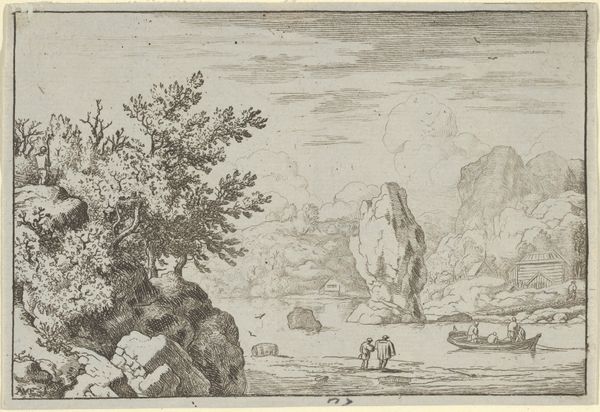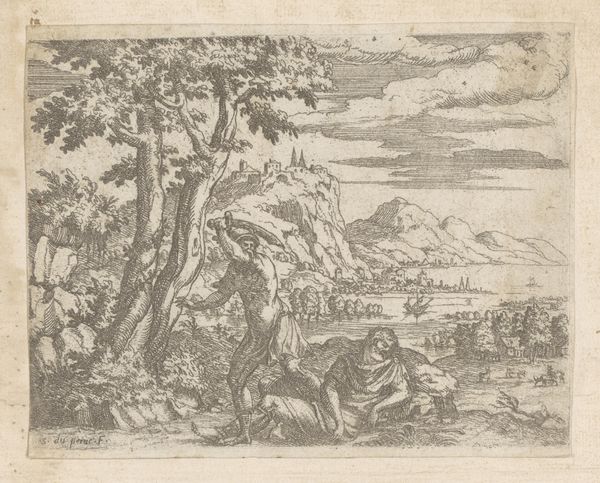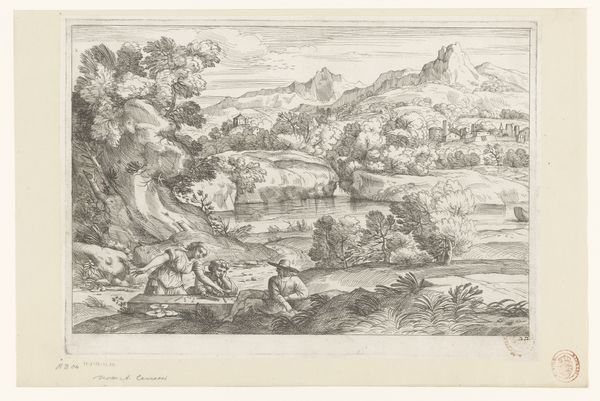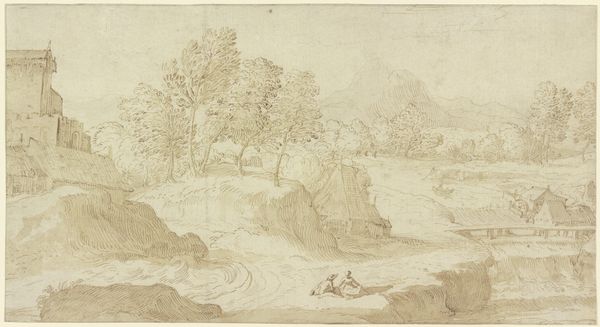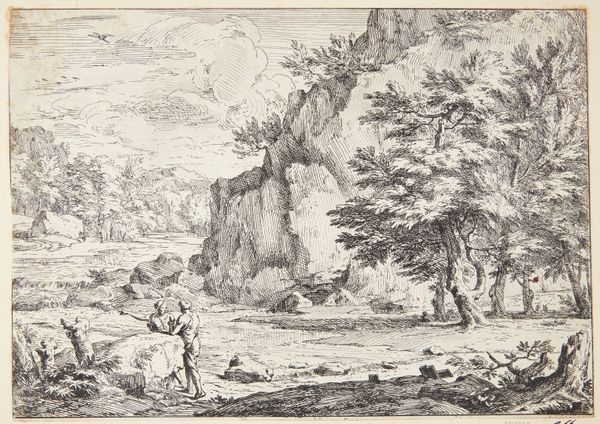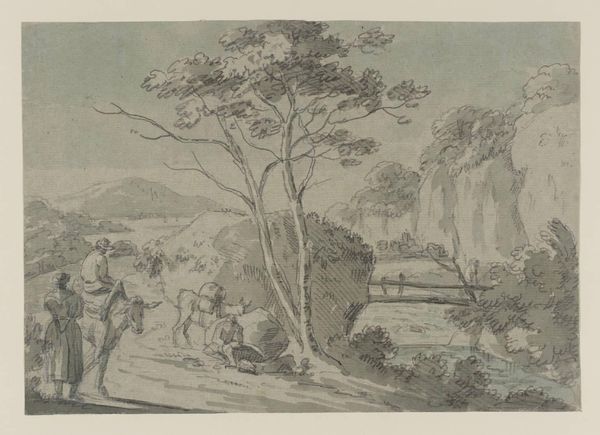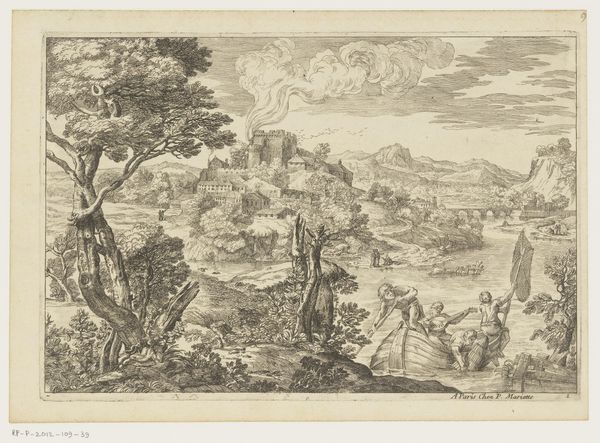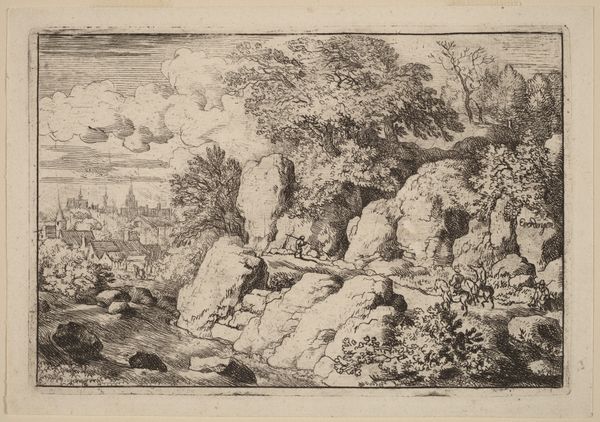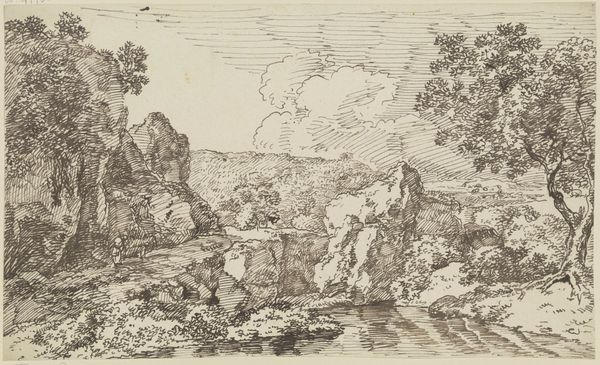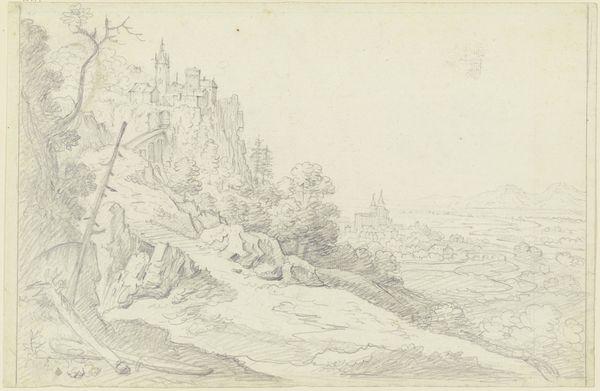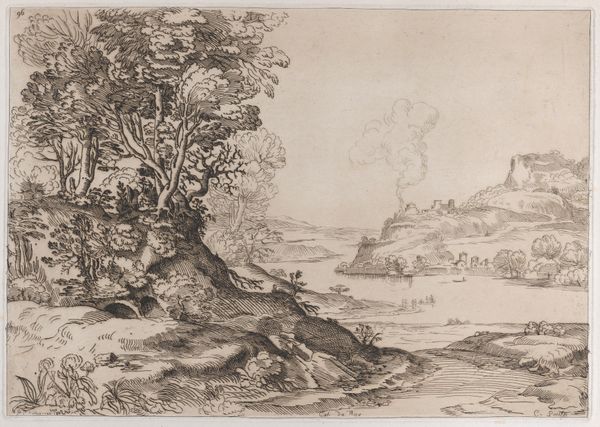
drawing, print, etching, paper
#
drawing
#
baroque
# print
#
pen sketch
#
etching
#
pencil sketch
#
landscape
#
etching
#
paper
Dimensions: 201 × 290 mm (image); 219 × 304 mm (plate); 222 × 310 mm (sheet)
Copyright: Public Domain
Curator: This is "The Beach with the Large Tower" an etching on paper by Claude-Joseph Vernet, dating from around 1734 to 1752. Editor: My first impression is of organized chaos; there's a meticulousness to the lines, but it depicts a bustling scene of everyday life by the sea. Curator: Yes, and Vernet was quite preoccupied with these depictions of daily life and labor. This particular work presents a landscape inhabited by working-class people engaged in various activities: fishing, tending to boats, simply existing. The tools they use, their garments—all speak to their roles in a specific coastal economy. Editor: The composition certainly leads the eye deliberately. From the lower left, where the figures are most active, towards the grand tower and the elevated architectural landscape on the right. The sharp contrast of light and shadow creates a beautiful depth that underscores the scene’s dynamism. Curator: Absolutely. It is indicative of Vernet's involvement with the materiality of the era. Consider the paper itself, likely produced in a specific region with its own production processes. The etching technique allows for mass production, which speaks to a broadening audience for art and landscape imagery at the time. This democratizing effect—the move away from exclusive commissions toward wider distribution—is something I think worth emphasizing. Editor: That is undeniable. However, I still see its elegance primarily rooted in formal qualities. The carefully calibrated arrangement of shapes, the textural variety achieved through etching... Even within a repeatable medium, there's incredible sophistication in its visual language. The way the lines dance across the paper. Curator: And how does that interplay manifest socially, considering these etchings made art more accessible, influencing tastes and aesthetics within burgeoning middle classes? The availability of prints allowed broader populations to consume images of ideal landscapes, indirectly affecting real-world environments and design preferences. Editor: A valid point, although one could argue that the inherent beauty in this work transcends its accessibility. It's a balanced conversation between line and form. Its elegant design elements stand firmly by themselves. Curator: Still, seeing those fishermen—it's crucial we ask, "Who has access to art? What are their tools, both figuratively and literally?” Editor: Well, I’ve certainly reconsidered how line weight conveys spatial depth today, whereas my friend here made me remember its historical distribution network. Thank you.
Comments
No comments
Be the first to comment and join the conversation on the ultimate creative platform.
